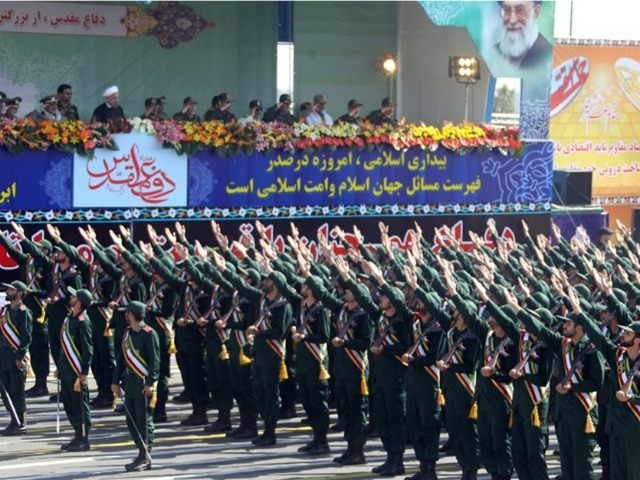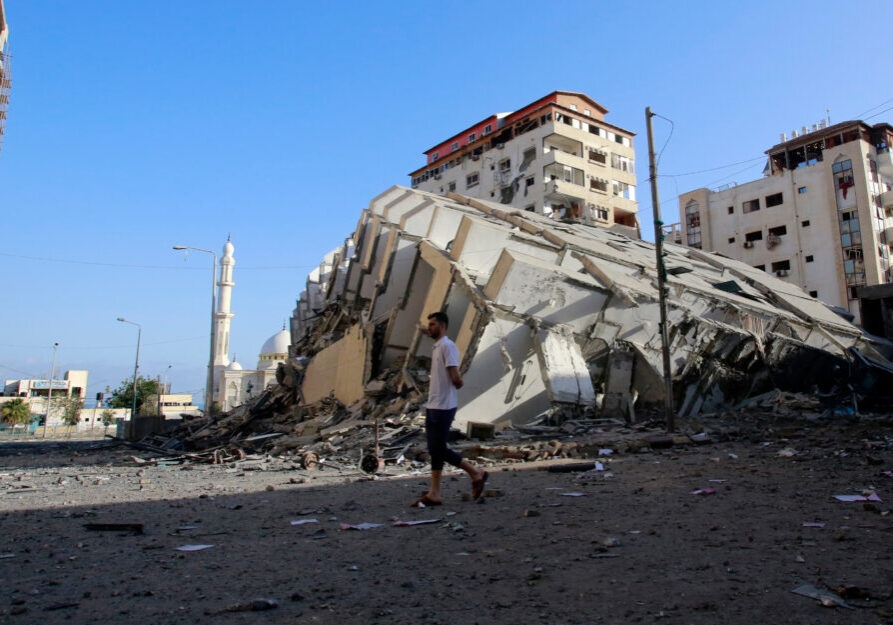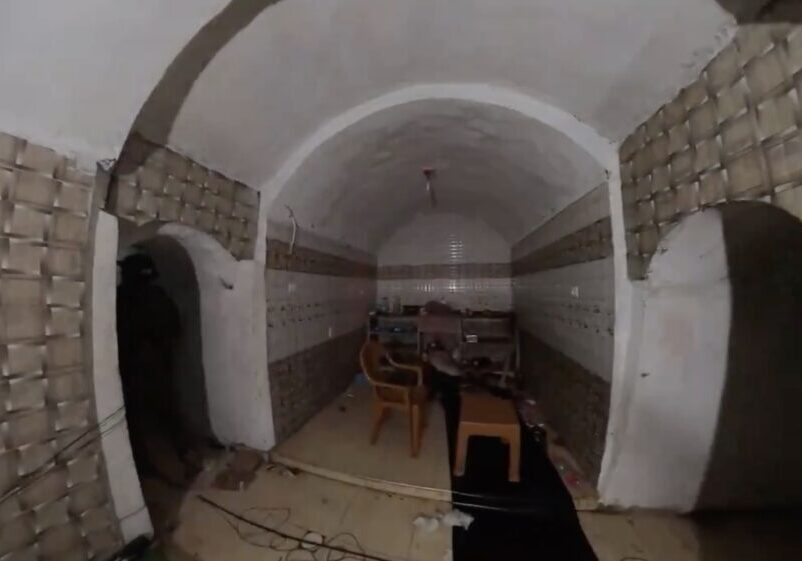Australia/Israel Review
Why the winner in Syria is … Iran
Oct 3, 2017 | Jonathan Spyer

Jonathan Spyer
A flurry of diplomatic activity is currently taking place in the Syrian and Iraqi arenas. While the moves are occurring on separate and superficially unrelated fronts, taken together they produce an emergent picture. That picture is of two camps, one of which works as a united force on essential interests, the other of which at present does not.
Israeli Prime Minister Binyamin Netanyahu in late August travelled to Sochi to discuss the issue of Syria with Russian officials. Specifically, Jerusalem is concerned with Iranian advances in the country. Israel considers that the de-escalation agreement for south-west Syria reached by Washington and Moscow makes inadequate provision for ensuring that Teheran and its militia allies do not establish themselves along the borderline with the Israeli-controlled part of the Golan.
It is noteworthy that this visit followed an apparent failure by a senior Israeli security delegation to Washington DC to ensure a US commitment in this regard.
As the officials were talking, the fighting fronts were on the move. Sunday saw the opening of the offensive to take the town of Tal Afar, 60 kilometres west of Mosul city, from the now crumbling Islamic State (IS). Among the forces taking part in the offensive are the Hashd al-Sha’abi/Popular Mobilisation Units. The PMU is the alliance of Shi’ite militias mobilised to fight IS in the summer of 2014. Most prominent among them are Iranian-supported groups such as the Badr Organisation, Ktaeb Hezbollah and the Asaib Ahl al-Haq.
An additional notable process under way was the attempt to induce the Iraqi Kurds to abandon their proposed independence referendum, which took place on September 25. Iran is fiercely opposed to any Kurdish move toward independence. Teheran is in the process of moving forward to a clearly dominant position in Iraqi politics, through its sponsorship of the Shi’ite militias and the ruling Dawa party. The last thing Teheran wants would be for a major part of the country to split away.
But as has become clear, the European and US allies of the Kurds are also hostile to any Kurdish bid for independence. Both German Foreign Minister Sigmar Gabriel and US Secretary of State Rex Tillerson made clear their respective countries’ opposition to the referendum and any hopes of a Kurdish exit from Iraq.
Recent weeks have also supplied evidence of the growing closeness between Iran and Turkey. Iran’s chief of staff, General Mohammad Hossein Bagheri, met with Turkey’s President Recep Tayep Erdogan. Following the meeting, Erdogan announced that the two countries have agreed on joint military action against the Kurdish PKK and its Iranian sister organisation, PJAK. Bagheri’s visit to Ankara was the first by an Iranian chief of staff since the Islamic Revolution of 1979.
An additional new development came to light in August – namely, the new role of Egypt as a player in the Syrian arena. Egypt has in recent weeks played a role as a mediator in de-escalation agreements in the eastern Ghouta area and in Homs, with the permission and approval of both the Russians and the Saudis.
Finally, the recent period saw the surprising visit of Iraqi Shi’ite leader Muqtada al-Sadr to Riyadh, where he met with Saudi Crown Prince Mohammed Bin Salman. Sadr, a sectarian Shi’ite figure who retains ties to Iran, has nevertheless sought to position himself as an Iraqi patriotic leader in recent months.
So what does all this diplomatic and military activity mean?
In looking to locate the pattern of events, one becomes immediately aware that the activities of only one player add up to a unified whole. That player is Iran.
In backing the Shi’ite militias as political and military forces, opposing Kurdish aspirations to independence, seeking by all possible means to establish forces along the border with Israel, and seeking to draw Turkey away from the West and toward itself, Teheran is pursuing a coherent, comprehensive policy and strategy. This strategy ignores any distinction between Iraq, Syria and Lebanon, treating all three as a single arena of conflict. Allies and assets are all utilised to build the project of maximising Iranian geographic reach and political and military potency within this space.
Russia should not be considered a strategic ally in this. The Russians have more modest goals in Syria, and little interest in Iraq. Moscow favours the increased Egyptian role in Syria which Teheran surely opposes. Russia is also not indifferent to Israeli and Saudi concerns and interests, hence the Netanyahu visit to Sochi.
The US also does not currently seem to wish to be a primary player in this arena. Washington does not appear to be developing a real strategy for containing the Iranians in eastern Syria. The internal strains and turmoil in the US may indeed be a core factor preventing any real possibility of a US focus on this contest.
This leaves the local players. The components of the Iran-led alliance in this space are Iran itself, the Assad regime, Hezbollah, the Iraqi Shi’ite militias and important elements within the Iraqi Government. Turkey appears to be moving in the direction of this bloc, though its size and Sunni nature mean it will never fully be a part of it.
Perhaps most notable of all in this emergent strategic picture, in which a clear shape is discernible as the waters settle, is the absence of a really powerful Sunni Islamist bloc. The once ascendant group of Muslim Brotherhood type states and movements is effectively no more – with Qatar besieged, Turkey moving closer to Iran, and Hamas also attempting to rebuild its relations with Teheran.
The Salafi jihadis are also reduced back to the level of a terrorist irritant – a sometimes lethal one, to be sure, but far from a contender for power. The Islamic State is on the verge of destruction. The core al-Qaeda leadership is dominant only in Idleb Province in Syria.
This is an anomalous situation. Political Islam continues to dominate Sunni Arab politics at street level. But the resilience of relatively stable Sunni Arab autocracies in Cairo, Riyadh, Abu Dhabi and Amman, and the eclipse of the Sunni Arab rebellion in Syria have removed it – for now at least – from the real power game in the Middle East.
What is as a result facing the cohesive and coherent Iran-led bloc is a much more nebulous gathering, but one which if combined possesses more power, more population and more wealth than the Iranians. It lacks, however, the binding organisational capacity provided by the Revolutionary Guards Corps. It also does not possess the broad ideological commonality of the Teheran-led group.
Observe the forces mentioned in this article: Israel, Saudi Arabia, the UAE, the Kurdish Regional Government, Egypt, the Kurdish paramilitary forces in Turkey and Iran. (Add in Jordan and the remaining non-jihadi Syrian rebels to complete the picture) These are the core elements, each on its own relevant front, standing in the way of Iranian advancement in the Middle East. There are differences, disputes, in some cases sharp rivalries between them. Much will depend on the creation of lines of communication and cooperation in this camp. The contest between these two groups in the Iraq-Syria space is today the core strategic conflict in the Middle East.
Jonathan Spyer, a fellow at the Middle East Forum, is director of the Rubin Centre for Research in International Affairs and author of The Transforming Fire: The Rise of the Israel-Islamist Conflict (Continuum, 2011). © Jerusalem Post (www.jpost.com), reprinted by permission, all rights reserved.
Tags: Iran






